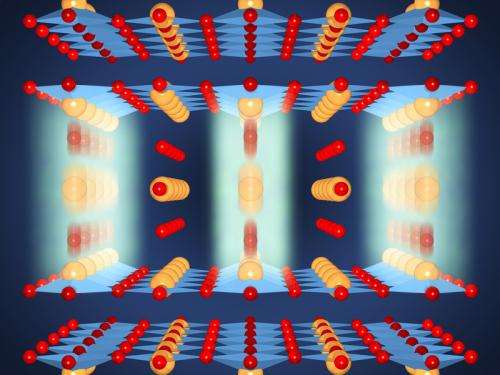December 8, 2014 report
Best of Last Week – Replacing wires with light, physics mystery solved and link between vitamin D and depression

(Phys.org)—It was an impressive week for researchers combining physics and engineering as one team of engineers took a big step toward using light instead of wires inside computers—they've created a prism-like device that can split light into its different colors and bend each at a right angle, a possible step towards carrying data optically. Meanwhile, another team looking to answer the question of whether capacitors in electrical circuits can provide large-scale energy storage has been able to show that that the right combination of resistors and capacitors can allow both quick charging and long-term discharging, possibly opening up a path for using them instead of batteries in some devices.
And another team using short infrared laser pulses has found a way to get superconductivity without cooling—the ceramic material they were testing was superconductive for just few millionths of a microsecond, but the feat represents a significant step forward in creating such materials. Also, a team of researchers at the University of Michigan has apparently solved a 45-year physics mystery that shows a path to quantum transistors. They've uncovered several properties of a compound called samarium hexaboride which suggest the material may be used as a topological insulator.
In biology news, one team of researchers has found the human eye can see "invisible" infrared light—at least under very specific conditions, such as when shot with a rapidly pulsing laser. They believe their findings might one day help doctors discover hidden problems in the retina. Meanwhile another team is hard at work decoding blue light's mysterious ability to alter the body's natural clock. They've got a grant from NIH and are hoping to learn why it is that people exposed to blue light, such as that from commercial lighting, find their internal clock becomes disrupted which messes up their sleep and wake patterns. Also, researchers at Johns Hopkins reported that they've found that diabetes in midlife can be linked to significant cognitive decline 20 years later, which has very serious implications as diabetes rates continue to skyrocket due to poor eating and exercise habits of large numbers of people across the globe.
And finally, if you're one of the millions of people around the world suffering from depression, it could be tied to how much time you spend outside—an international research partnership has found that vitamin D deficiency and depression may be linked. Few foods have the vitamin in them, most get what they need naturally as it is produced when ultraviolet light from the sun strikes the skin triggering vitamin D synthesis. Thus for some, following the advice given by mother's the world over, to go outside and play for awhile, might help.
© 2014 Phys.org




















